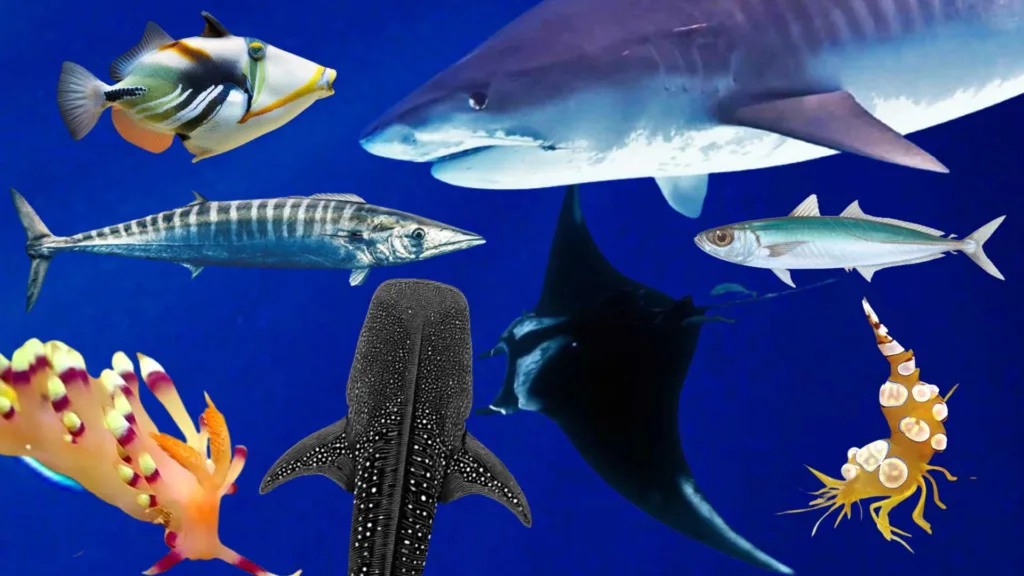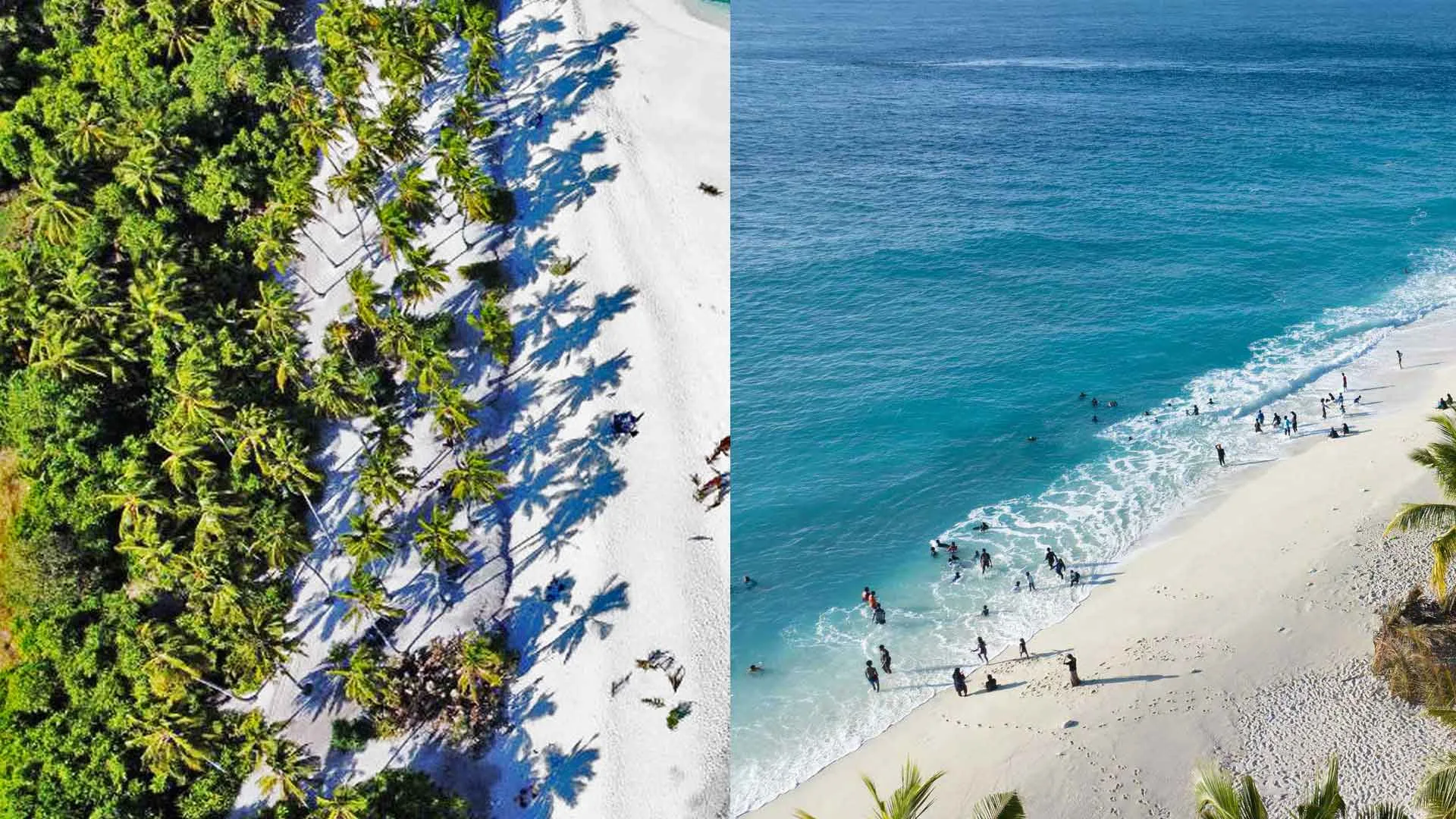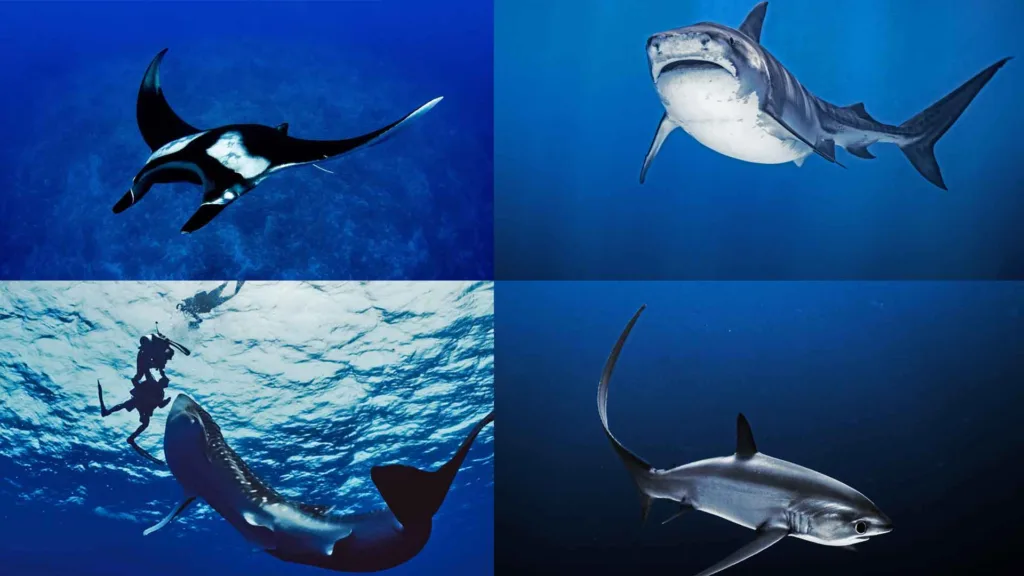
Geimiski fanno is situated on the northern side of Fuvahmulah. In Fuvahmulah, Fanno refers to a walkway leading to the beach. This location is also one of the most culturally significant places in the Maldives. The oldest mosque in Fuvahmulah is located near this beach. It is called the “Geimiski” mosque.
Fish life can be found in abundance in the reef flat, reef front, and open sea that are located close to this location. There are a lot of reef fish, colourful hard corals and soft corals, and macro life to discover at this Fanno. This is an excellent dive spot on the island. The pelagic fish are a few hundred meters from the beach, and some of them do emerge from the depths to wade through the shallow waters of the reef’s flat. From ancient times to the present, our islanders have landed everything from small reef fish to magnificent pelagic predators while staying on this unique sandy beach.
Butterflyfish, parrotfish, angelfish, surgeonfish, five-banded sergeant-major, lined surgeonfish, titan triggerfish, daisy parrotfish, chequerboard wrasse, nudibranchs, shrimps, bluestripe snapper, elegant unicornfish, moorish idol, longfin bannerfish, smallspotted dartfish, oriental sweetlips, and humpback snapper are among the reef fish you will see. A few metres from the reef front, you can explore the world of pelagic fish.
Some of the most common fish found in this area include bluefin trevally, giant trevally, black trevally, yellowfin trevally, barracuda, wahoo, and sailfish. There are schools for rainbow runners, mackerel scad, and fusiliers nearby. You can also find large milkfish here. This area’s warm waters also attract majestic species such as oceanic mantas, thresher sharks, and whale sharks. Geimiski Fanno is a popular destination for yellowfin tuna, wahoo, and sailfish.
Fishing dhoanis can be seen cruising through this region at the break of dawn. These vessels do not travel far out in the open ocean. However, they travel close to the extremely steep drop-off. Fishermen typically use mackerel scad or Rapala at dawn. They keep the vessel moving at a moderate speed. The fast-swimming yellowfin tuna and wahoo strikes stun the fishermen, who awakened from their sleep an hour or so ago.
These ferocious strikes shift the fishermen’s sluggish mood into one of active engagement. When these predators are caught by the bait, the fishermen should pull them in the direction of the boat. Otherwise, the chief fisherman, Keyoulhu, will scold you. No matter how many tiger sharks or large barracudas are waiting to tear apart or eat the yellowfin tuna in half, you should pull it towards the boat and into the vessel, even if you only get the head. Gemimiski fanno is one of the most spectacular areas for reef fish and pelagic species because it is close to the tip of Thoondu beach, the island’s northern edge, where the current flows continuously and changes direction based on nature’s call.

